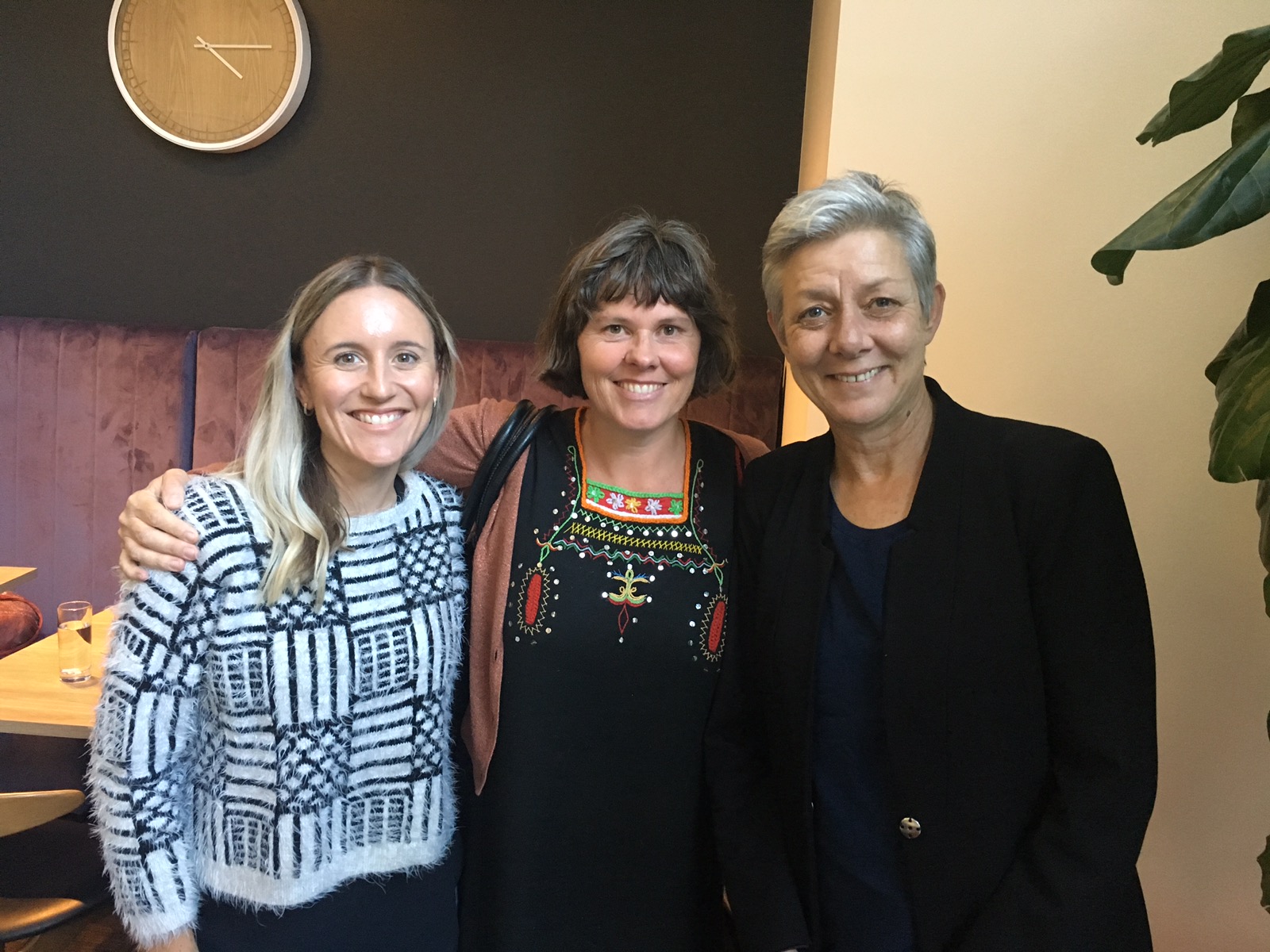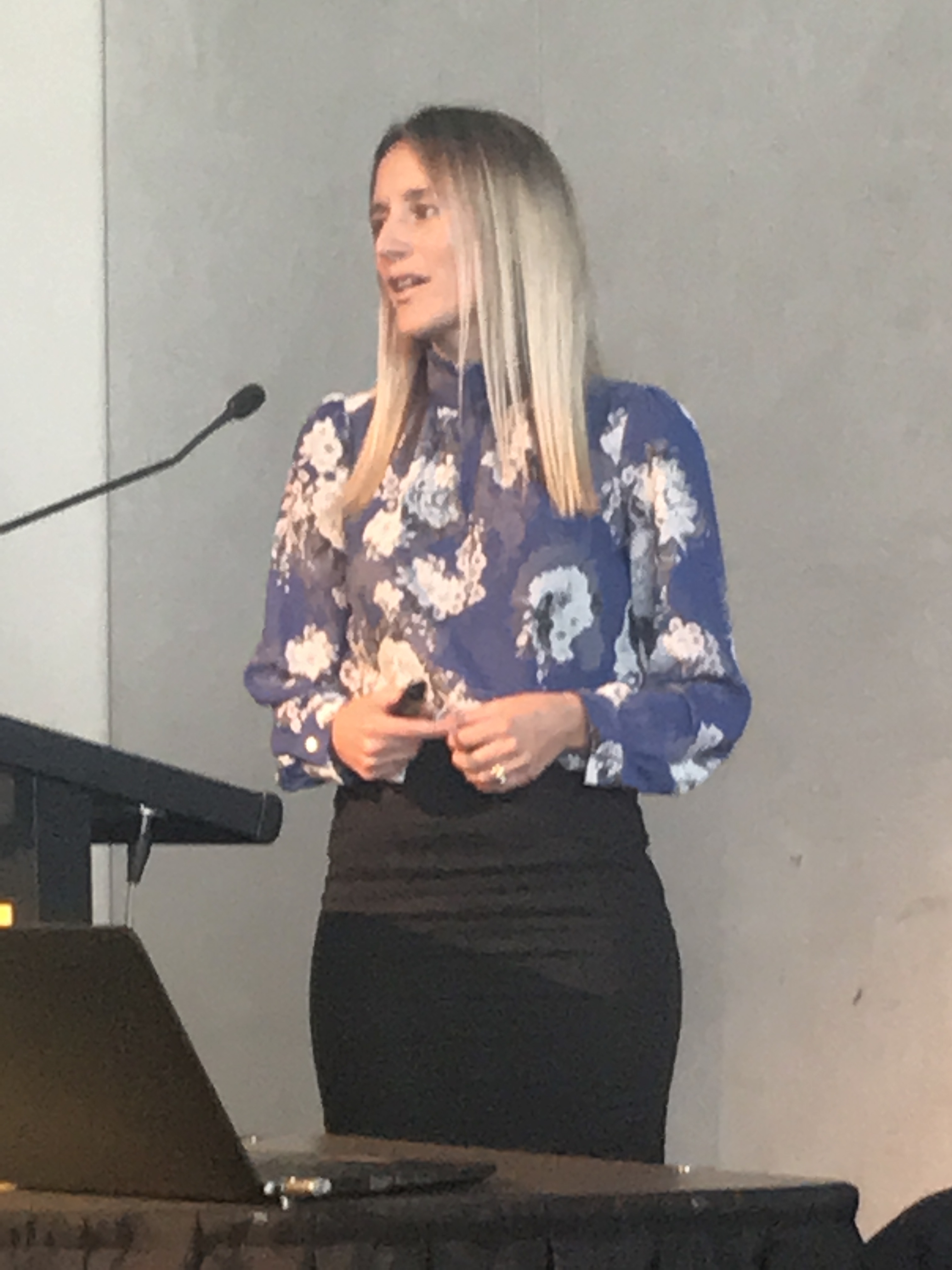Sarah Jane Moore is an artist, performer and researcher and in May 2019 she became the recipient of a six-month pilot aNAT Synapse on Country Residency. Sarah Jane is hosted in the school of Biological, Earth and Environmental Sciences (BEES) at UNSW Sydney in a lab space where she creates her work. It is the first time that Sarah Jane has ever worked collaboratively with the scientific community and she has found the experience an exciting and inspiring one.
The picture featured above was taken by Dr Anne Galea and features Dr Laura Parker, Dr Sarah Jane Moore and aNAT’s Director Vicki Sowry during the first project meeting. At this meeting in May, Head of School Alistair Poor, Sarah Jane and Laura met with Vicki and Dr Anne Galea and Dr Rebecca Le Bard to support and grow and yarn about the project and this first conversation seeded the ‘I know where oyster lies exhibition’.
Creating visual art works in a laboratory in BEES at UNSW has required Sarah Jane to gain knowledge of hazards and controls to minimise risk in a laboratory and she has been required to gain skills in the ability to use Chem Alert and to understand basic chemical labelling. She has been trained in understanding the basic requirements for plant and equipment and laboratory safety awareness. She now wears a lab coat to work and shares her table with colleagues who peer down microscopes to identify bug parts and collect, label and dry plants. Sarah Jane’s work in the lab has challenged the stereotypes and fixed ideas that she had about a laboratory being a sterile and sanitary environment. When she first arrived, there was a large television, multiple buckets of red sand and an old door with rabbit skins drying in the corner of her work space. Sarah Jane has loved the red dust. It permeates her work space and settles on her art work and in mid June she has a bucket of it donated to the project alongside three rabbit skins.
Hongyuan Ma gifted me some seeds from the Casuarina glauca or the Swamp Oak shrub collected from Mt Barker in Western Australia in November 2012. The seeds have salt tolerance and she is working on seed germination in response to bacteria and salt. She is a visiting scholar from China, Northeast Institute of Geography and Agroecology, the Chinese Academy of Sciences. I am using her seeds in my work and they have inspired a seed series within the oyster ecologies.
The chance meeting with Hongyuan Ma in the laboratory has introduced the seed metaphor to the series. Viewing her slides and the growth and beauty that emerges from her experiments has inspired emergent themes. I encounter the desert grass seeds through Hongyuan’s science and begin to establish a relationship with her seeds and the Baludarri. I bring the seeds to the work and nestle their shapes amongst the shells. Hongyuan Ma’s changing, growing seeds are remembered. Growth, repair, survival. From bones to shells and seeds, the work shifts and changes under the laboratory lens.
Feathers float. Seeds germinate. Butterflies are free.
As part of their research partnership, Sarah Jane regularly speaks to her research partner Dr Laura Parker. Laura is an Indigenous scientist who has focused her career on the impacts of climate change on marine molluscs, particularly the Baludarri, Sydney Rock Oyster. Working in collaboration with industry, Laura’s research is providing solutions to prevent the loss of the Baludarri which is vital to the health of marine and estuarine ecosystems, a major source of protein for nations around the globe and a cultural link for Indigenous Australians to their traditional lands. In May Sarah Jane had the opportunity to attend the 3rd Australia New Zealand Marine Biotechnology Society Conference at UNSW and hear Laura present on her research. Listening to Laura and her colleagues present their research, iterate their knowledge and demonstrate their commitment to and expertise in caring for Sea Country was profound.
Listening to Laura present her work was life changing. It was a case of right place, right time. I was transfixed.
In that time, at that moment there was no place that I would have rather been.
I was mesmerised by this oyster woman, this scientist, this proud Wiradjuri woman before me presenting her work.
Such poise! Such grace! Such knowledge!
I was hooked. SJM
As part of the aNAT residency, Sarah Jane will be spending time at the Port Stephens Fisheries Institute on Worimi Country where she will observe a long-term experiment of Laura’s aimed at understanding the physiology of the Baludarri. During this experiment, adult Baludarri’s will be collected from the field and brought into the laboratory at the Port Stephens Fisheries Institute where they will be held in 750L flow-through tanks. There will be 100 oysters per tank and the oysters will be fed 300L of algae per day. The experiment involves over 3000 oysters and following an acclimation period, a range of physiological measures will be assessed to better understand the way in which the oyster’s function and their capacity for resilience to climate change.
Sarah Jane’s first visit to Worimi Country will be in July during NAIDOC Week. Sarah Jane will observe, respond to and use the experiment and science surrounding the experiment to create new work back in the lab. She will also connect to community and respond to Worimi Country.
During their time together in Port Stephens, Sarah Jane and Laura will give their first workshop together. As part of their outreach, they have planned a story telling workshop to be delivered within a pre-school context at a local child care centre. The group of young nature lovers and emerging scientists are eagerly awaiting NAIDOC Week when Sarah Jane and Laura will share their work.
Sarah Jane and Laura pay their respects to the Worimi peoples, their Elders, past present and emerging for sharing their traditional lands and both scholars are hoping to deepen their understandings of Worimi cultural practise throughout this project.


